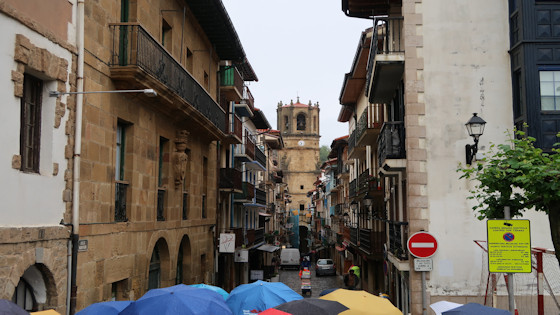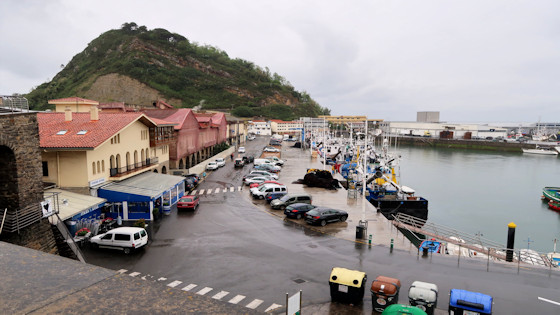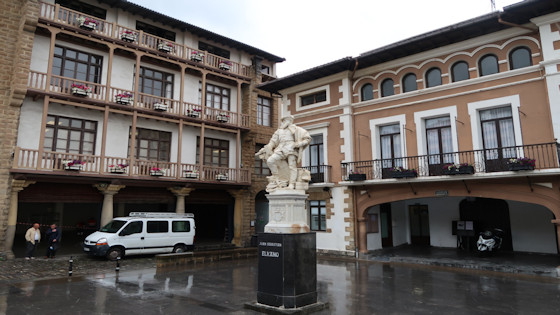Getaria (Basque, Spanish Guetaria) is a port city in the Spanish autonomous region of the Basque Country. It is located about 20 km west of San Sebastián on the Bay of Biscay.

Fishing, tourism and viticulture are the economic basis of the old town, whose history dates back well into the Middle Ages. Founded at the end of the 13th century, under the rule of the Kingdom of Navarre, Getaria was a seafaring town and was one of the most important ports on this stretch of coast.

Narrow streets with beautiful stone houses, their wrought-iron balconies decorated with flowers, lead to the historic center. Here rises the three-nave Gothic church of San Salvador, whose origins date back to the 14th century.

Behind the church begins the harbor area with the fishing port and numerous fish restaurants.
The hill is called Monte de San Antón.

At the entrance to the old town stands a monument to the first circumnavigator, Juan Sebastián Elcano, who was born in Getaria around 1486. He was an officer in Ferdinand de Magellan's expedition to circumnavigate the globe.
On the voyage around the world, which began on September 20, 1519, with five ships, Elcano was initially helmsman of the Concepción. He was spared execution by Magellan after a failed mutiny. After Magellan's death on April 27, 1521, on the island of Mactan (Philippines), Elcano took command of the last two remaining ships. He sailed from the Philippines to the Spice Islands (Moluccas), took a cargo of spices on board, and from there returned to the port of departure, Sanlúcar de Barrameda in Spain, on September 6, 1522, in the last ship, the Victoria, along with the 17 other survivors of the 265-man expedition. There he was duly received by Emperor Charles V: He was knighted and also awarded a coat of arms with a globe with the Latin inscription "Primus circum dedisti me." (First you went around me).

romantic side alley

